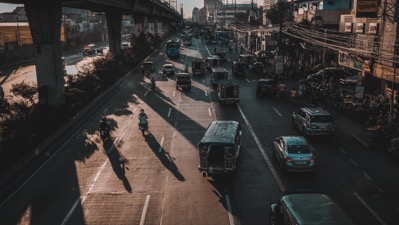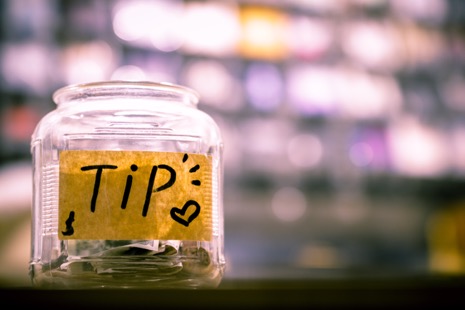Table Of Contents
The Philippines is one of the most popular summer destinations in the world. If you are planning on visiting the country known for its world-class beaches, you should learn more about its money and how to pay for your purchases.
What Is The Philippines Official Currency?
The currency that is used presently in the Philippines is called the Peso. The bank notes are denominated in 20s, 50s, 100s, 200s, 500s, and 1,000s and are among the most colourful paper money you will ever come across.
The coins are denominated in 1s, 5s, and 10s and smaller ones which you may not come across as much.

On printed publications, the Philippine Peso is often abbreviated as “PHP”
The word “Peso” has a history of its own. Before 1967, it was denoted as “Peso” on the money that was printed and circulated. One year after, “Peso” was changed to “Piso”.
The United States Dollar or USD is an accepted form of payment in the Philippines. There are some establishments that will accept the USD as payment. However, it would be a good idea to do some research on the foreign exchange rate before transacting in USD.
Although we mentioned earlier that Philippine coins will hardly be used, it would be advisable to have them on you when you are going around the city.
Travel Tip #1
Especially keep a handful of coins that are denominated into 1s, 5s, and 10s. You can use them to pay for public transportation – bus, taxi, and the iconic jeepney – as well as round out your change.
How To Use Banking And ATM Services In The Philippines
Planning to visit the popular beaches of Boracay, Puerto Galera, and those in Siquijor Island? Load up on cash before travelling! Finding an ATM can be quite a challenge in these remote locations. And if you do find one, you better hope it is operational.
Always use an ATM that is located within the premises of the bank. The Philippines has been on the news because skimming devices have been discovered in some of the ATMs.
There are fewer chances of thieves attaching a skimming device in an ATM located in a bank. Also, the card will be easier to retrieve if it gets captured by the ATM.
Among the most popular ATMs in the Philippines are from the following banks: Metrobank, Banco de Oro, and the Bank of the Philippine Islands (BPI).
The Philippines’ present central bank, the Bangko Sentral, has set the maximum amount per ATM withdrawal to 10,000 Pesos per single transaction. The transaction charge will be around $4.
Travel Tip#2
–When withdrawing money from an ATM, have the total withdrawal amount rounded out to 500. For example, indicate “9,500” instead of “10,000”. 1,000 Peso denominations are very hard to break especially in the provincial areas.
Traveller’s Cheques and Credit Cards

It will not be a good idea to bring Traveller’s Cheques to the Philippines as it is hardly used or honoured in the country. Cash, debit and credit cards are the best ways to pay for your purchases and to exchange currency.
Credit cards are popularly used in the major cities – Makati, Manila, and Cebu – as well as the tourist destinations like the aforementioned Boracay.
You can also use the credit card to pay for hotels, domestic flights, and to partake in recreational activities such as diving. To be sure, bring VISA or Mastercard. Keep in mind that many establishments may add on a surcharge of 10% on your credit card transaction.
Travel Tip#3
Before flying to the Philippines, inform the bank of your travel plans and ask them to authenticate your ATM and credit cards. Otherwise, if your Philippine transaction appears in their record, the bank might deactivate your card for safety reasons.
Travelling Around The Philippines – How To Live With The Locals
As we mentioned earlier, it is always a good idea to have coins in your wallet whenever you travel around the country. If you are taking public transportation like a bus, tricycle, and jeepney never pay with a large bill.
The driver may inform you that he cannot break your 100, 500, or 1,000 Peso bill. The usual Modus Operandi is to get you to let him keep the change.
If you find yourself in an establishment that can break your large bill, go ahead and pay with 1,000s. It is a good idea to have smaller denominated bills on your person than large ones.
When shopping at the flea markets, do your best at haggling. You might be able to get the best deals with expert haggling.
How To Tip In The Philippines

Like every other country, tipping is an accepted practice in the Philippines. However, the rules and guidelines are more intuitive than they are standard.
If you are happy with the service and experience of a taxi driver, it is perfectly fine to give him some extra money. This is especially true for honest taxi drivers.
The Philippines has built up a nasty reputation for taxi drivers who try to scam foreigners by charging them a “premium” for their service. They do this by adding the extra charge on the taxi meter.
In establishments like restaurants and bars, you may find your bill padded with a “10% service charge”. When queried, the restaurant will tell you that the service charge will go as tips for the service crew.
Again, this rule is not set in stone and the restaurant can simply use the 10% to add to its profit margin. If you enjoyed the food and service, go ahead and place a tip. It will certainly help the cause of the service people who are paid low wages.